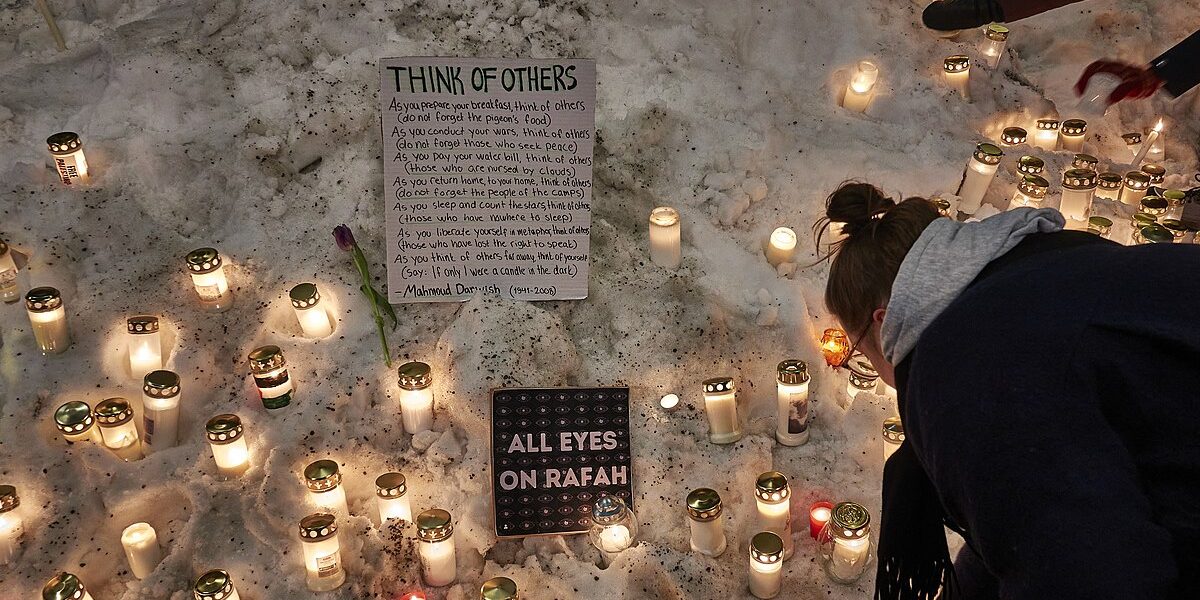Virtual vigilance: AI-generated activism in the ‘All Eyes on Rafah’ campaign
In an age where social media is so ever-present in our lives, its influence seeps into every aspect of our collective society, activism is no exception. From the Arab Spring to the #MeToo movement, social media has transformed how our voices are heard, enabling individuals to exert influence on a global scale. Historically, only the most powerful have been able to tell their side of the story. Today, social media has created an environment where everyone, though not on equal footing, has a chance to express their perspectives.
The ongoing humanitarian crisis in Palestine is a notable example. For the first time, we are witnessing a heavily documented genocide in real time. This unprecedented visibility allows global witnesses to stay informed, amplifying awareness and urging action. Yet, with this power comes responsibility. Social media activism is often criticised for being superficial or performative, as illustrated by the recent “All Eyes on Rafah” AI-generated Instagram stories.
the increased use of AI could blur the lines between reality and fiction, discrediting genuine social media posts
Social media activism is far from a new phenomenon. The Arab Spring in the early 2010s demonstrated the power of platforms like Facebook and Twitter in mobilising groups and organising large-scale protests. Similarly, the Black Lives Matter movement used social media to organise protests, raise awareness, and inform individuals on a global scale, extending beyond the reach of traditional media like news outlets and television. In a unique way, the #MeToo movement used social media to showcase personal stories, shedding light on silenced perspectives, and creating a powerful narrative against sexual harassment and assault.
Palestinian activism continues this evolution, mobilising groups, informing individuals, and telling unheard stories simultaneously. The recent “All Eyes on Rafah” campaign marks a shift, highlighting the impact of AI by using AI-generated images instead of real photos and videos. This raises questions about authenticity and the role of digital tools in modern activism.
the introduction of fake images risks creating a more sceptical audience
With the rise of AI, the influence of AI-generated images in activism is unprecedented. While these images capture the attention of millions, this ‘trend’ has prompted several ethical considerations. Real reporters and journalists risk their lives to capture authentic images of Palestinian struggles, and seeing their work overshadowed by AI content diminishes their efforts. Moreover, the increased use of AI could blur the lines between reality and fiction, discrediting genuine social media posts. In a space where the harsh reality of adversity is meant to motivate the masses, the introduction of fake images risks creating a more sceptical audience. This scepticism could undermine the credibility of genuine activism, making it harder to mobilise support and drive meaningful change.
Beyond the impact of AI images, the scale of this campaign raises further questions. Many celebrities have reposted AI-generated images as their first post about the cause, perhaps finding it easier and more palatable than the countless devastating real images we see daily. This calls into question the authenticity of their activism and their willingness to stand by their beliefs.
the challenge will be maintaining interest and pressure on policymakers long after the initial wave of posts diminishes
Recent trends in minimal-effort activism are particularly problematic in these situations. They overshadow other posts due to their popularity and palatability, while offering no substantial impact on the movement. The Black Lives Matter movement saw a similar phenomenon with the viral spread of black squares. While the intention was to show solidarity, these squares were criticised for being performative, with many users posting them without deeper action or understanding of the movement’s goals. The “All Eyes on Rafah” campaign may follow a similar pattern, emphasising the need for more meaningful involvement beyond social media posts.
These circumstances call into question the effectiveness of social media as a whole. Social media is one of the quickest ways to mobilise large groups, but the long-term impact of social media activism is widely debatable. The #MeToo movement led to significant conversations and some legal changes, showcasing the potential of online activism to effect real-world outcomes. However, the viral spread of the Ice Bucket Challenge, despite raising funds for the ALS Association, highlighted the fleeting nature of social media trends. While social media can spread information rapidly, its reliance on algorithms that prioritise trends creates an environment where sustaining movements’ ‘popularity’ becomes challenging. For “All Eyes on Rafah,” the challenge will be maintaining interest and pressure on policymakers long after the initial wave of posts diminishes.
this campaign reminds us that while digital tools are powerful, they must be used responsibly and in conjunction with real-world actions
Despite its limitations, social media’s power to raise awareness and mobilise support is unmatched. It can bring attention to causes overlooked by mainstream media. However, social media should be part of a broader strategy to accomplish real-world goals. Posting AI-generated images should be the starting point, not the endpoint, of one’s activism. Protests, lobbying for change, donations, and direct support for affected communities should be the ultimate goal. Specifically, for “All Eyes on Rafah,” this could involve sharing more detailed information about the situation in Gaza, highlighting the work of local activists and organisations, and providing tangible ways for people to get involved.
The “All Eyes on Rafah” campaign highlights the complexities of social media activism and the significant impact individuals can have on a cause. While AI-generated images can raise awareness quickly, they are not always the best approach. Educating oneself, sharing relevant information, and engaging in meaningful actions can have a much more profound impact. This campaign reminds us that while digital tools are powerful, they must be used responsibly and in conjunction with real-world actions. By balancing online efforts with meaningful engagement, the full potential of social media can be harnessed to create lasting change.

Comments